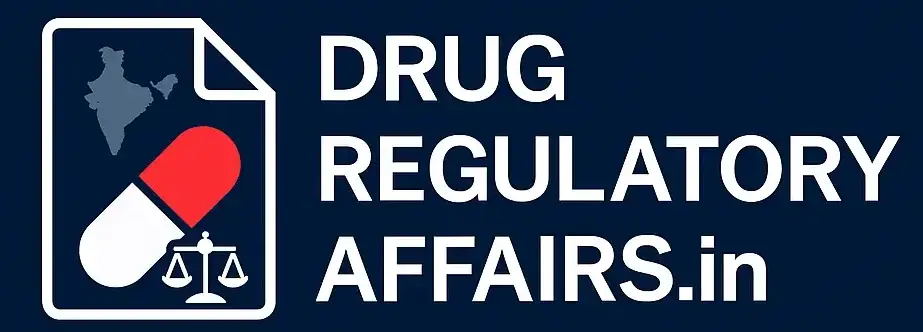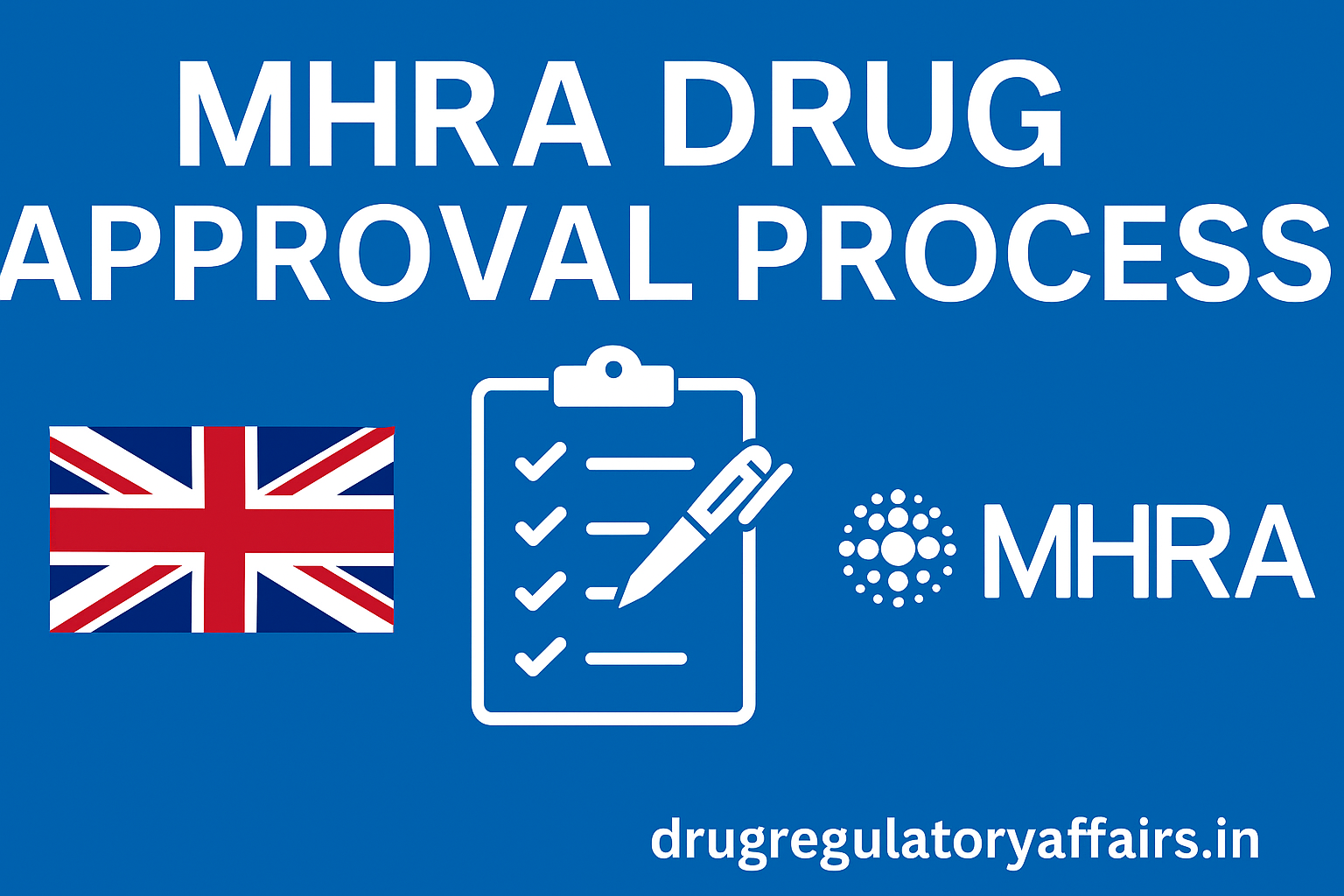MHRA Drug Approval Process – How to Register a Drug in the UK (Step-by-Step Guide)
MHRA Drug Approval Process: The Medicines and Healthcare products Regulatory Agency (MHRA) is the UK’s national authority for regulating medicines, medical devices, and blood components for transfusion.
Also Read: CDSCO Drug Approval Process – How to Register a Drug in India (Step-by-Step Guide)
After the UK’s withdrawal from the European Union (Brexit), the regulatory landscape shifted, requiring companies to comply with new national and post-Brexit international procedures.
This detailed guide about MHRA Drug Approval Process walks you through the MHRA Drug Approval Process, covering application types, licensing routes, submission formats, timelines, fees, and post-approval compliance.
🏛 What is the MHRA?
MHRA is a UK government agency under the Department of Health and Social Care. It ensures that:
- Human medicines are safe, effective, and of high quality
- Clinical trials comply with Good Clinical Practice (GCP)
- Pharmaceutical manufacturing facilities meet GMP standards
- Adverse events and product complaints are monitored and addressed via pharmacovigilance
MHRA collaborates with other international regulators and was part of the EMA (European Medicines Agency) before Brexit.
Must Read: EMA Drug Approval Process – A Complete Guide to Centralized, DCP, and MRP Pathways
📦 Types of Licensing and Routes for Drug Registration
MHRA offers multiple routes for drug approval:
1. National Procedure (NP)
For marketing authorization (MA) only in Great Britain (England, Scotland, Wales) or Northern Ireland. Applicable for new active substances, generics, biosimilars, and known substances.
2. European Commission (EC) Decision Reliance Procedure (ECDRP)
A transitional route allowing MHRA to rely on EMA’s centralised decisions to fast-track MA approval in the UK.
3. Unfettered Access Procedure
For products already authorized in Northern Ireland to gain access to Great Britain without re-submission.
4. Rolling Review Procedure
Used in emergencies (e.g. COVID-19 vaccines) to assess data in real-time before final submission.
📄 MHRA License Types
| License Type | Description |
|---|---|
| PL (Product License) | Standard UK-wide license (pre-Brexit) |
| PLGB | For products approved in Great Britain post-Brexit |
| PLNI | For products marketed only in Northern Ireland |
📝 Application Format: CTD & eCTD
The application must follow Common Technical Document (CTD) or electronic CTD (eCTD) format.
CTD Modules:
- Module 1: UK-specific administrative info
- Module 2: Overviews and summaries
- Module 3: Quality data
- Module 4: Nonclinical study reports
- Module 5: Clinical study reports
Submissions are uploaded via the MHRA Portal or Gateway e-submission system.
⏳ Timelines for MHRA Drug Approval Process
| Application Type | Review Timeline |
|---|---|
| National Procedure (NP) | 150 days (excluding clock-stops) |
| EC Reliance | ~67 days |
| Variations (Type IA/IB/II) | 30–90 days |
| Clinical Trial Authorization | ~30 days |
💰 Application Fees (Indicative)
| Application Type | Fee (GBP) |
|---|---|
| New Active Substance (NAS) | £103,000–£117,000 |
| Generic Application | £17,000–£35,000 |
| Variations (Major/Minor) | £2,500–£5,000 |
| Clinical Trial Application | £3,060 |
Additional fees apply for each strength, pack size, or formulation.
📋 Steps in the MHRA Drug Approval Process
1. Eligibility Determination
- Decide the licensing route: NP, ECDRP, or Rolling Review
- Check if it’s a new chemical entity (NCE) or generic
2. Dossier Preparation
- Compile your CTD/eCTD modules
- Prepare Risk Management Plan (RMP), pharmacovigilance system master file (PSMF)
3. Electronic Submission
- Submit via MHRA Portal/Gateway
- Fees paid via invoice or online portal
4. Validation
- MHRA checks completeness and format compliance (approx. 10 days)
5. Scientific Assessment
- Full review by MHRA assessors (150-day review clock)
- Interactions may involve clock-stops and additional info requests
6. Decision
- If accepted, a marketing authorization (MA) is issued with a PLGB or PLNI number
- If rejected, reasons are detailed in a refusal letter
📈 Post-Approval Requirements: MHRA Drug Approval Process
- Pharmacovigilance System Setup: UK-based QPPV (Qualified Person for Pharmacovigilance) must be appointed
- Periodic Safety Update Reports (PSURs) submission
- Labeling Compliance: Meet UK-specific packaging and leaflet guidelines
- Variations Management: Submit updates via Type IA, IB, or II variations
- Renewals: Every 5 years, unless exempted
📍 UK-Specific Regulatory Nuances
- MHRA requires a UK Responsible Person (RP) for pharmacovigilance
- No centralized EMA access post-Brexit (except Northern Ireland)
- Northern Ireland follows EU regulations, Great Britain does not
- ECDRP is a temporary reliance mechanism until December 2024 (subject to extension or termination)
🧪 Clinical Trials in the UK
- Submit via IRAS (Integrated Research Application System)
- Approval needed from MHRA and Research Ethics Committee (REC)
- Standard review timeline: ~30 days
⚖️ MHRA vs EMA vs USFDA – Comparison
| Feature | MHRA | EMA | USFDA |
|---|---|---|---|
| Country | UK | EU | USA |
| CTD Format | Yes | Yes | Yes |
| Centralized Procedure | No (post-Brexit) | Yes | No |
| Rolling Review | Yes | Yes | Yes |
| Approval Timeline | ~150 days | 210+ days | ~10 months |
❓ FAQs – MHRA Drug Approval Process
Q1. Can I submit the same dossier for both EMA and MHRA?
You must adapt the dossier’s Module 1 for the UK; the rest can be reused with appropriate changes.
Q2. What is PLGB?
PLGB stands for Product License Great Britain—issued for drugs approved in England, Scotland, and Wales after Brexit.
Q3. Is eCTD mandatory in the UK?
Yes, MHRA strongly encourages eCTD for all new applications.
Q4. How do I access Northern Ireland?
You must comply with EMA rules and apply for PLNI license or use mutual recognition.
Q5. Does MHRA accept EMA approvals?
Yes, temporarily via the EC Decision Reliance Procedure (ECDRP), but subject to expiry.
🔚 Conclusion: MHRA Drug Approval Process
Navigating the MHRA Drug Approval Process requires a thorough understanding of UK-specific routes, post-Brexit adaptations, and documentation standards.
Whether you’re seeking a PLGB license for a new active substance or a generic entry via EC reliance, detailed planning, timely submissions, and strategic engagement with MHRA can ensure smooth market entry in the UK.

